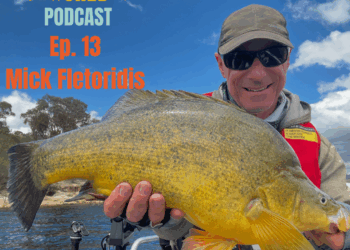A study of contaminant concentrations in fish since dredging for the Channel Deepening Project began has indicated fish from the lower Yarra River are still safe to eat. Victoria’s independent Environmental Monitor Mick Bourke said results from the 2009 Lower Yarra River Fish Study confirmed the Channel Deepening Project assessment finding that there were no likely health risk concerns for recreational anglers from the dredging of contaminated sediment.
“The study found that the contaminant concentrations in fish sampled from the lower Yarra River were generally lower than the concentrations recorded in 2006 and were below the guideline levels for Australian Food Standards,” Bourke said.
The Yarra River and its catchment have a long history of industrial, agricultural and urban activities, which have led to contaminants being recorded in the river sediments and in the fish that live in the Yarra River.
Eighty black bream were analysed for the same contaminants tested in previous fish studies including heavy metals such as copper, arsenic and mercury and organic chemicals such as agricultural pesticides and polychlorinated biphenyls (PCBs).
The results found that the contaminant concentrations in fish sampled in 2009 were generally lower than the concentrations recorded in 2006 and were below the guideline levels for Australian Food Standards.
Mick Bourke said the results meant the current conservative health advisory for people who caught fish from the lower Yarra and Maribyrnong Rivers would not change.
“While it is safe to eat fish caught from these rivers, recreational anglers are still advised to limit themselves to four serves of fish a month and one serve of eel a month, and children and women of child bearing age should limit themselves to one serve of fish a month and should not eat eels caught from the lower Yarra and Maribyrnong Rivers.”
Commenting on the results of the study, fish biologist and Fishing World writer Dr Ben Diggles said the levels of contamination indicate significant environmental degradation, which is to be expected given the close proximity of the study site to such a large city.
“Of course, this doesn’t stop some green groups from proclaiming the need for no take areas near large population centres (like near Brisbane and Sydney), despite the fact these areas are also demonstrably degraded and unlikely to recover from the other human impacts in the absence of fishing (fishing being the only thing green zones “protect” the environment from),” he adds.
Diggles also believes that in this study no consideration has been given to potential implications on fish health or fisheries outcomes; the panel was only asked to comment on human health effects.
“It’s pretty likely that these results show why areas close to our major cities are such poor quality fish nursery areas – based on our experience with the Noosa River bass, viability and/or survival of larvae spawned by fish taken from such polluted waters is likely to be pretty low.
This doesn’t even consider the impacts of this contamination (or the dredging for that matter) on habitat quality. However on the other hand, it’s also plausible that the most sensitive fish species have been eradicated from the area decades ago, and that yelloweye mullet and bream are just ‘weedy’ species that can tolerate these levels of contamination and
environmental degradation.”
For more information visit: www.oem.vic.gov.au



















